I used to hate jigsaw puzzles. I thought they were frustrating, messy, and took way too long to solve. But my wife showed me how those parts of jigsaw puzzles can actually be fun: there’s something satisfying and meditative about working through those frustrations, sorting through the mess, and putting a picture together, one piece at a time, over the course of a few hours. (Or days.)
Technology
Snag this 43-inch Pioneer Xumo TV for $130
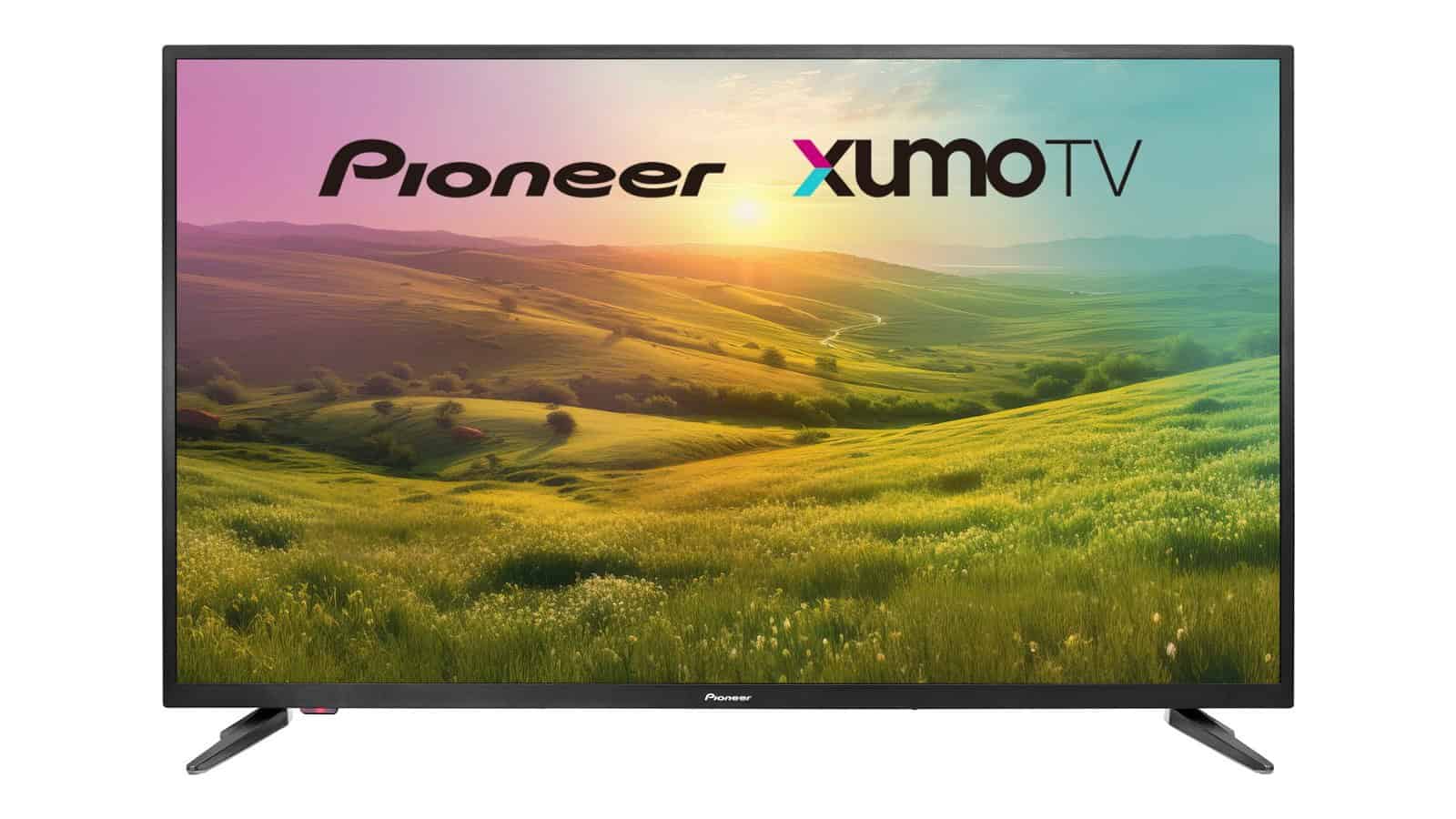
Right now Best Buy is offering a great deal on the 43-inch Pioneer Xumo TV that we think is a must-have pickup if you’re in the market for an affordable 4K TV option.
Normally this TV retails for $270 at its full retail price. However, Best Buy is currently offering it for just $130. This is the same TV that was on sale for $150 back in September. So Best Buy has knocked the price down by another $20 to make it cheaper than ever. This is also the all-time low price based on price history over the past year.

Now most people probably think of affordable TV that are this low-priced as being low quality but that simply isn’t the case. Not these days. This is simply a good deal on a decent TV that won’t break the bank. It has a 43-inch screen and it’s 4K so it’s perfect for either a secondary room or a TV for the kids. It’s even a decent option as your main TV if you don’t have one and aren’t looking to spend a lot.
In addition to being a 4K TV, this is a smart TV as well. What that means if you’re new to smart TVs is that you will have access to all kinds of apps for streaming content. Whether you want to stream music or stream movies or TV, you’ll have options. You can install apps from all kinds of services like Netflix, Hulu, Disney Plus, Max, YouTube, and more.
The Xumo TV is also compatible with Apple AirPlay and it supports Dolby Vision and Dolby Audio for better picture and sound quality. All-in-all, a great TV at a really great price.
Technology
How Fear the Spotlight became Blumhouse’s first video game
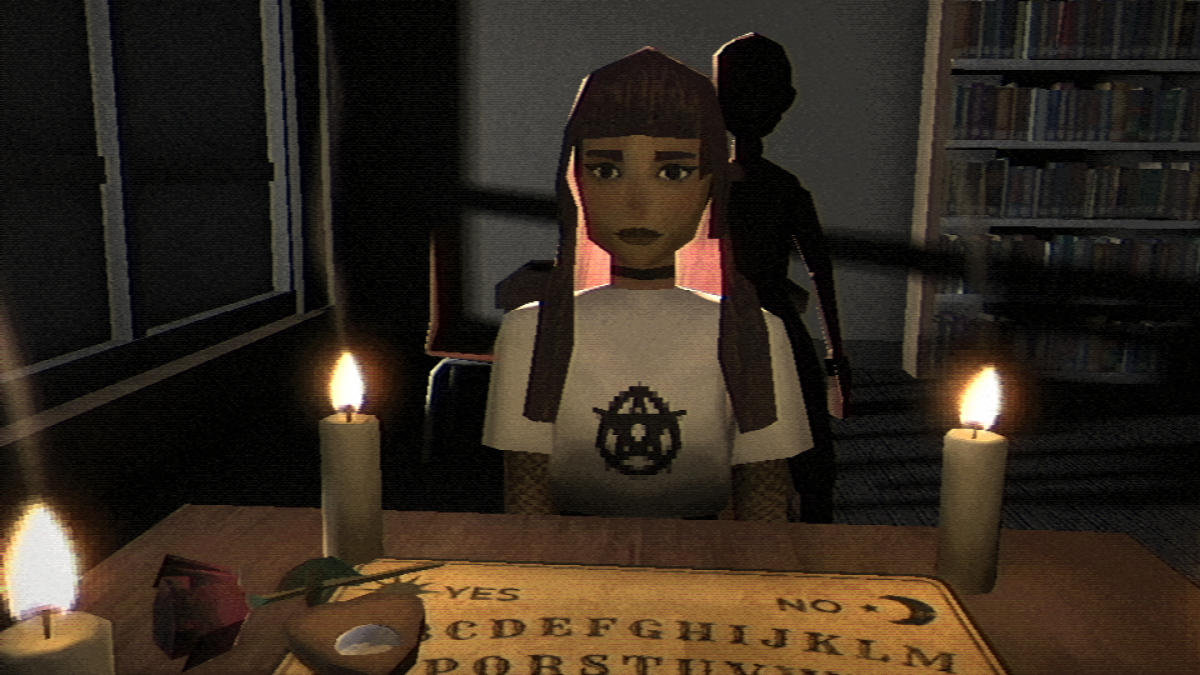
Blumhouse wasn’t going to publish a game in 2024. The studio, one of the leading names in horror films, announced in February 2023 that it was launching a video game publishing business and executives were scouting projects from independent teams with budgets under $10 million. The goal of Blumhouse Games was to support a few rad horror titles per year, with a tentative plan to start publishing them in 2025.
But then, in September 2023, the Blumhouse folks stumbled across Fear the Spotlight. It was a moody, voxelized horror game about two friends sneaking around their haunted high school and communing with the ghosts of students that died in a fire in the ’90s. Spooky shenanigans and mysterious puzzles ensued, all presented in third-person and with a gritty PS One aesthetic. Fear the Spotlight was a PC game made by Crista Castro and Bryan Singh of Cozy Game Pals, a husband-and-wife team with impressive professional credentials: Castro was an art director at Nickelodeon and the art lead on the Animaniacs reboot, and Singh was a programmer who worked on The Last of Us and Uncharted series and Journey. They left their corporate jobs and founded Cozy Game Pals during the pandemic, and Fear the Spotlight was their first major project together.
Fear the Spotlight didn’t have a particularly buzzy debut, but a few weeks after it hit Steam, Blumhouse Games president Zach Wood and creative lead Louise Blain happened to spot it on Twitter. Castro told Engadget how it went down:
“Zach found it, and he and Louise Blain sat down and played it together and were like, oh my gosh, this is exactly the kind of game that we want to be publishing, this is really great. Let’s reach out to them and see, do they need any help? Is there something here that we can work together on?”
“Meanwhile, yes, we did need help,” Singh added, laughing. “We had released it, but we had no idea how to get people to know about it. The people that were finding it were saying very positive things, and we’re like, OK, that’s great, but now what do we do? We know how to make things, but we don’t know anything else about marketing.”
Blumhouse signed Cozy Game Pals and asked how they could help improve Fear the Spotlight. At first, Castro and Singh suggested porting it to consoles and adding additional languages, basic things to get the existing game in front of more players.
“They were excited about the idea, but then they also offered more time,” Singh said. “They asked, what would you do if you had an extra year to work on it?”
The opportunity to expand Fear the Spotlight caught Castro and Singh by surprise. It also scared them, at first.
“We had never really considered a significant addition to the game before that,” Singh said. “And we also had what we thought was a finished game that we were really proud of. So it was really, really difficult to figure out how to add to a thing that we felt was finished; we didn’t want to ruin it. Part of it is our taste and our work, but also part of it feels like black magic. Like, if we mess with it, is it going to come out in a way that we’re proud of?”
Castro and Singh took the chance. On October 26, 2023, about one month after Fear the Spotlight’s debut, they removed it from Steam with the promise that they’d add new gameplay, console versions and localization features. They didn’t mention Blumhouse at the time. Behind the scenes, Blumhouse Games gave Cozy Game Pals one year to create the definitive version of Fear the Spotlight, with no creative restrictions.
The revamped version of Fear the Spotlight came out on Steam, PS4, PS5, Switch and Xbox Series X/S on October 22, 2024, developed by Cozy Game Pals and published by Blumhouse Games. It’s the first game in Blumhouse’s publishing roster, which includes future titles from EYES OUT, Half Mermaid, Perfect Garbage, Playmestudio and Vermila Studios.
Cozy Game Pals used the year of extra development time well. Rather than messing with the black magic of the original, Castro and Singh added an entirely new segment, doubling the game’s run time and expanding on their initial ideas in sophisticated, extra-horrific ways. Fear the Spotlight, by the way, is an excellent horror experience. It has low-poly environments, low-res textures and grainy CRT effects, but its animations are smooth and the camera uses friendly third-person controls, nailing the nostalgia without compromising modern conveniences. The story revolves around two teenage friends, Vivian and Amy, and takes them on individual but connected journeys through twisted, spirit-infested versions of reality. Their dialogue and personalities feel authentic, and their emotions are incredibly relatable, whether in the face of unspeakable horrors or just when talking to a crush. It has a few good jump scares, too.
The first half of Fear the Spotlight is packed with satisfying puzzles, spooky phantoms and tense hide-and-seek mechanics. The second half, created after Blumhouse’s intervention, adds layers of emotional depth and introduces a truly terrifying foe. Vivian is the main playable character in the original version and Amy’s story takes center stage in the expanded content.
“The first Vivian story was really us figuring out how to make this game,” Castro said. “But then by the time we were making Amy’s, we had so many lessons learned. I feel like the monster is better, the puzzles are better, the storytelling is more streamlined. The second half wraps it up really nicely.”
On top of handling the art, Castro was the main writer on Fear the Spotlight, while Singh handled programming. Castro was the diehard horror fan in the relationship — he was a Resident Evil boy, she was a Silent Hill girl (read to the theme of Avril Lavigne’s Sk8er Boi) — and together, they wanted to capture the fun of being scared in video game form. Fear the Spotlight draws from their personal lives and memories of high school, when every emotion felt new, extreme and sometimes silly. From this lens, Fear the Spotlight also deftly handles serious topics like loss, death, prejudice and love.
“It’s just such an impactful time in our, in most people’s lives,” Castro said. “I grew up playing these games in the ’90s or in the early 2000s, like Silent Hill one and two and three. So thinking back to high school and how I felt, writing the story was just like, I can only write from my own personal experience. Having a crush and feeling awkward, and when you actually bond with someone, how special that is.”
Singh continued the thread, saying, “I think the home-life stuff — we bond over a lot of our shared experience, which is also represented in the game. Families are complicated, family structures. Having a father that’s not present in your life, or the loss of a very close family member, it just changes you and affects you. Those are just pulled from our lives.”
Castro and Singh lovingly described Blumhouse Games as a scrappy team of horror fans, with fewer than 10 people supporting a handful of projects at once, and doing so while trying to prove themselves in a new market. On top of handling trailers and press for Fear the Spotlight’s re-release, the Blumhouse crew helped Cozy Game Pals find a contractor to do a logo and key art, a porting company to help get the game on consoles, and a localization team. More than any of that, though, Castro and Singh said the people at Blumhouse Games seem to truly enjoy the projects they’ve signed.
“They’ve just been the ideal partner, incredibly supportive,” Castro said. “They really let us decide everything for our game, the game is completely our vision. We would show them prototypes and level designs and of course, they had feedback and thoughts, but yeah — ”
“They know our game really well,” Singh said. “They’re genuine fans of the original release. They know our game intimately and can talk to us about our ideas from a very informed perspective.”
Castro concluded, “They come from it from a support perspective. Like, how can we help you guys create your vision that you care about, that you’re happy with. It’s been amazing.”
Fear the Spotlight is available now for $20 on Steam, PS4, PS5, Switch and Xbox Series X/S.
Technology
NASDAQ CEO Adena Friedman isn’t surprised we haven’t seen a resurgence in startup IPOs yet
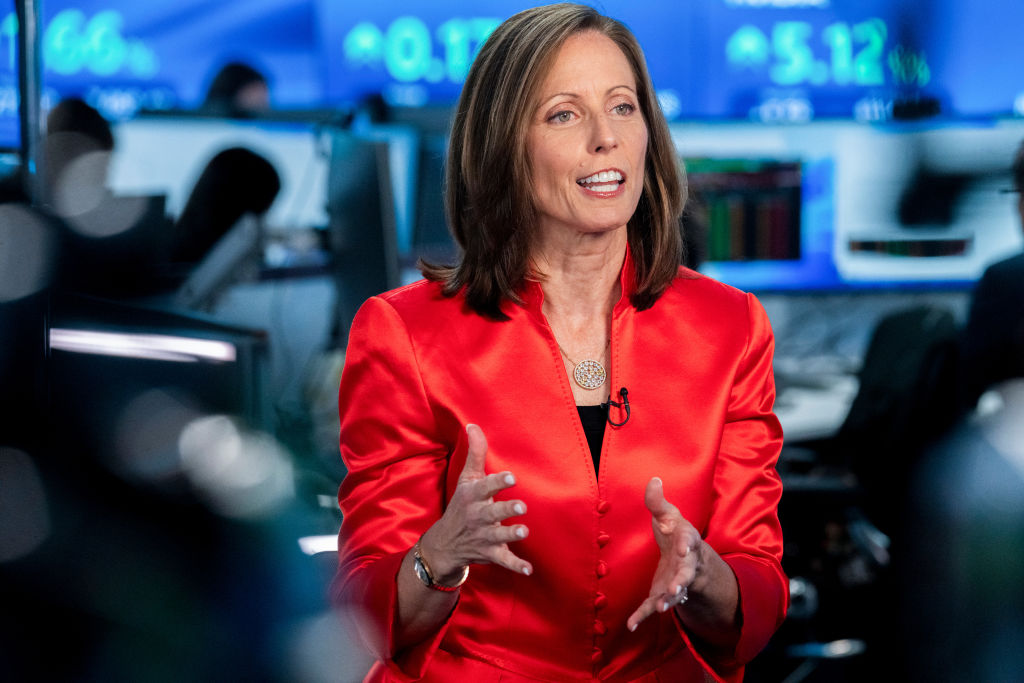
While many venture investors, and likely their LPs, were hoping IPOs were going to come back in 2024, that hasn’t happened and isn’t likely to in the next two months.
NASDAQ CEO Adena Friedman isn’t surprised.
Friedman said at Axios’s BFD event on Tuesday that while on paper the public markets have been experiencing a spectacular year with the S&P 500 up about 22%, there’s more to the story than the headline number. Friedman said that the S&P is overweight toward larger cap companies, as it should be. And on the strength of such companies Apple, Nvidia, Microsoft and so on, this index of companies has performed well.
But not all areas of the public market are having a great year, and those companies with smaller valuations are really struggling.
“It’s a little bit of a tale of two cities,” Friedman said. “Large cap, which has done very well, and you can kind of see in the S&P 500, you have a 10% kind of valuation increase in a large cap. But if you look at the small cap index, they’re actually down 10%.”
While the exact definition of a small cap company varies, there is a general agreement that it refers to companies under $2 billion which would fit a substantial amount of today’s late-stage startups. So that’s a data point telling them investors aren’t so interested in them.
Many late-stage startups are also not fully ready to go out and have a successful IPO, Friedman said. Companies want to have a really strong year of financials before they debut, which many companies likely don’t have yet after a tougher 2022 and 2023. And, in this atmosphere of higher interest rates, any company that is still in the red and burning through cash to support its growth, could face a particularly harsh reception from public investors.
“They want to have 12 months of really strong performance before they start to think about coming out,” Friedman said. “The cost of capital environment has made it so that companies, those that are relying on capital to continue to grow their businesses, are definitely trading at a discount.”
It doesn’t hurt that the private markets have become a safer place for companies to hang out as well. The secondaries market has been particularly hot all year – where investors buy stock in private companies, often in company-approved transactions. This has allowed late-stage companies to get some needed liquidity for their investors and/or employees. So it doesn’t seem like VCs are really pushing their portfolio companies toward the public market in these not-ideal conditions. One example is telemedicine provider Ro, last valued at $6.6 billion when it raised cash in 2022. Ro CEO Zach Reitano said the benefits of staying a private company are growing just about an hour before Friedman took the stage.
Friedman said she thinks IPOs will start to return with momentum in 2025. She added that there have been some positive recent biotech IPOs that have shown there is appetite for these younger companies. For instance, Tempus AI had a successful debut in June; raising $410 million; So did Bicara Therapeutics in September, raising $362 million, among others. Though, despite Friedman’s optimism, some of the biotech’s who went public this year didn’t see their share prices maintain their IPO-day prices.
She also naturally thinks that there is a good reason for companies to go public as it spreads the wealth to more than just a handful of private investors.
There were 14 venture-backed IPOs in the U.S. this year through the third quarter, according to PitchBook data. There have been 51 in total so far in 2024, meaning this year may not even match last year’s 86 total or 2022’s 81.
There does seem to be more momentum for a 2025 IPO market brewing already with names like Chime, Klarna and CoreWeave all seemingly moving in that direction.
Technology
Wilmot Works It Out is the best parts of jigsaw puzzles, but faster and cleaner

The makers of Wilmot Works It Out, a new puzzle game, understand this, and everything about the game is designed to make solving puzzles fun instead of annoying.
In the game, you play as Wilmot, an adorable white square with a face who has a puzzle-by-mail subscription. (He’s the same smiley square from Wilmot’s Warehouse, a 2019 puzzle game also made by developers Hollow Ponds and Richard Hogg and published by Finji.) Every time you open a new package delivered by Sam, your mail carrier friend, the pieces appear in a jumble on the floor so you can match them together into a picture to put on the wall.
When you’ve put up a completed puzzle, Sam typically comes knocking with a brief conversation and a new box of pieces to sift through. After you finish a bunch of puzzles, you’ll complete a “season” and can move on to the next, which amps up the difficulty.
Wilmot Works It Out has a few clever ways to iron out the process of putting pieces together. Unlike every jigsaw puzzle I’ve done in real life, the puzzle pieces in Wilmot are all square. That sounds annoying, but because you don’t have to rotate the pieces to match them, it’s much easier to compare pieces side to side to see if they might fit together. When you slide a piece next to its correct counterpart, the piece you’re holding flashes once, and you’ll hear a soft but satisfying chime. I loved chasing those chimes.
Those design choices make it much easier to quickly assemble puzzles. But the game’s best trick is that puzzle packages typically contain a few pieces that connect to a puzzle you can’t finish yet. Because of that, you’re constantly trying to figure out which pieces fit a puzzle you can solve now and which pieces are supposed to be set aside for later.
Some puzzles are quite tricky
In the early seasons, I didn’t find this to be too difficult. That changed in the later seasons, though, as the developers have some devilish tricks to make you really work to figure out which pieces belong with which puzzles.
One season, for example, featured pieces that seemed to assemble into a peacock with big colorful circles on its feathers. Then, I started matching pieces with more colorful circles, but they turned out to be owl eyes. I tried to find a way for the owls and peacock to connect for longer than I care to admit — until I eventually realized that they were two separate pictures.
Two of my biggest problems with jigsaw puzzles have been how long they take and how messy they are. They can take what should be a fun activity and turn it into a chore. But Wilmot Works It Out fixes both, highlighting what I love about jigsaw puzzles in a delightful video game.
Wilmot Works It Out is out now on PC and Mac.
Technology
Google’s next-gen Gemini 2.0 AI model is rumored to be launching in December
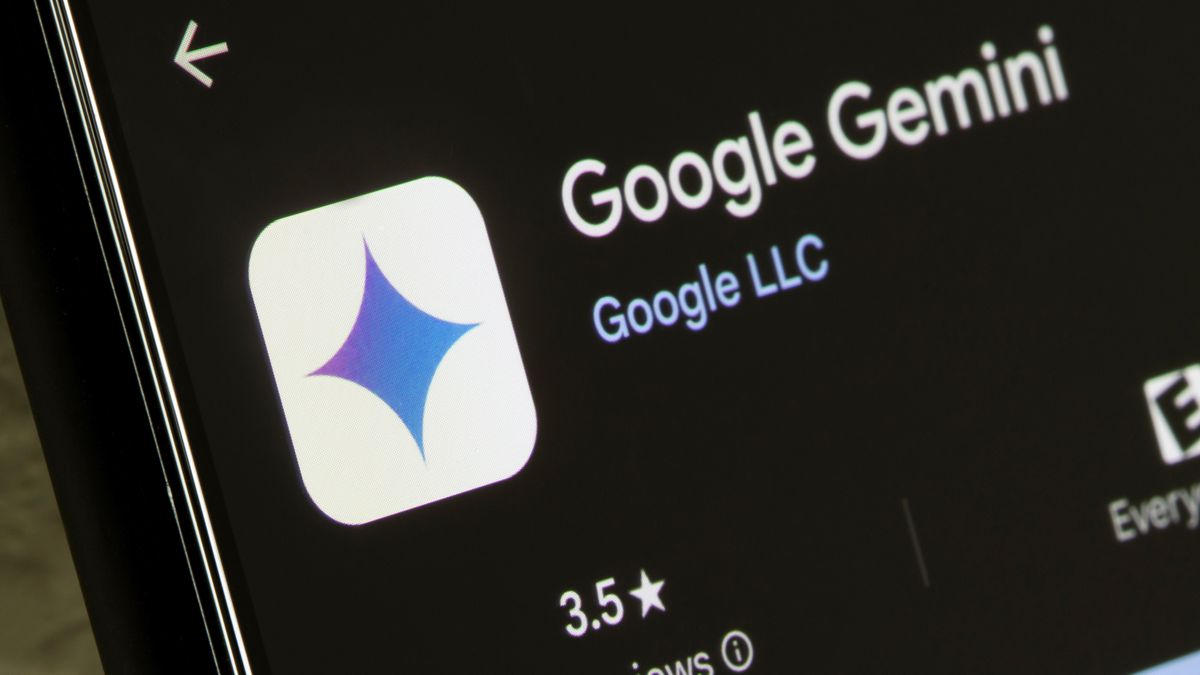
- Gemini 2.0 could be arriving in December
- Expect across-the-board performance improvements
- ChatGPT-5 may be launched at the same time
It was only a few days ago we heard rumors around OpenAI launching a next-gen ChatGPT-5 model – rumors dismissed as “fake news” by OpenAI chief Sam Altman – and now we’re hearing Google Gemini 2.0 could be made public in the next couple of months.
Like the ChatGPT rumor, this comes from The Verge (via 9to5Google). The last major Gemini upgrade came back in February, when Gemini 1.5 was pushed out. Google uses the Gemini name for both its AI bots, and the underlying models.
What we don’t get in this report are any indications of what might be new and improved in Gemini 2.0. If previous releases are anything to go by, expect smarter answers, faster processing, support for longer inputs, and more reliable reasoning and coding.
As per the report, Gemini 2.0 doesn’t offer the sort of performance increases its developers were originally hoping for – but the article also notes that this is a trend affecting all large language models (LLM) in general, not just those at Google.
Keeping up the pace
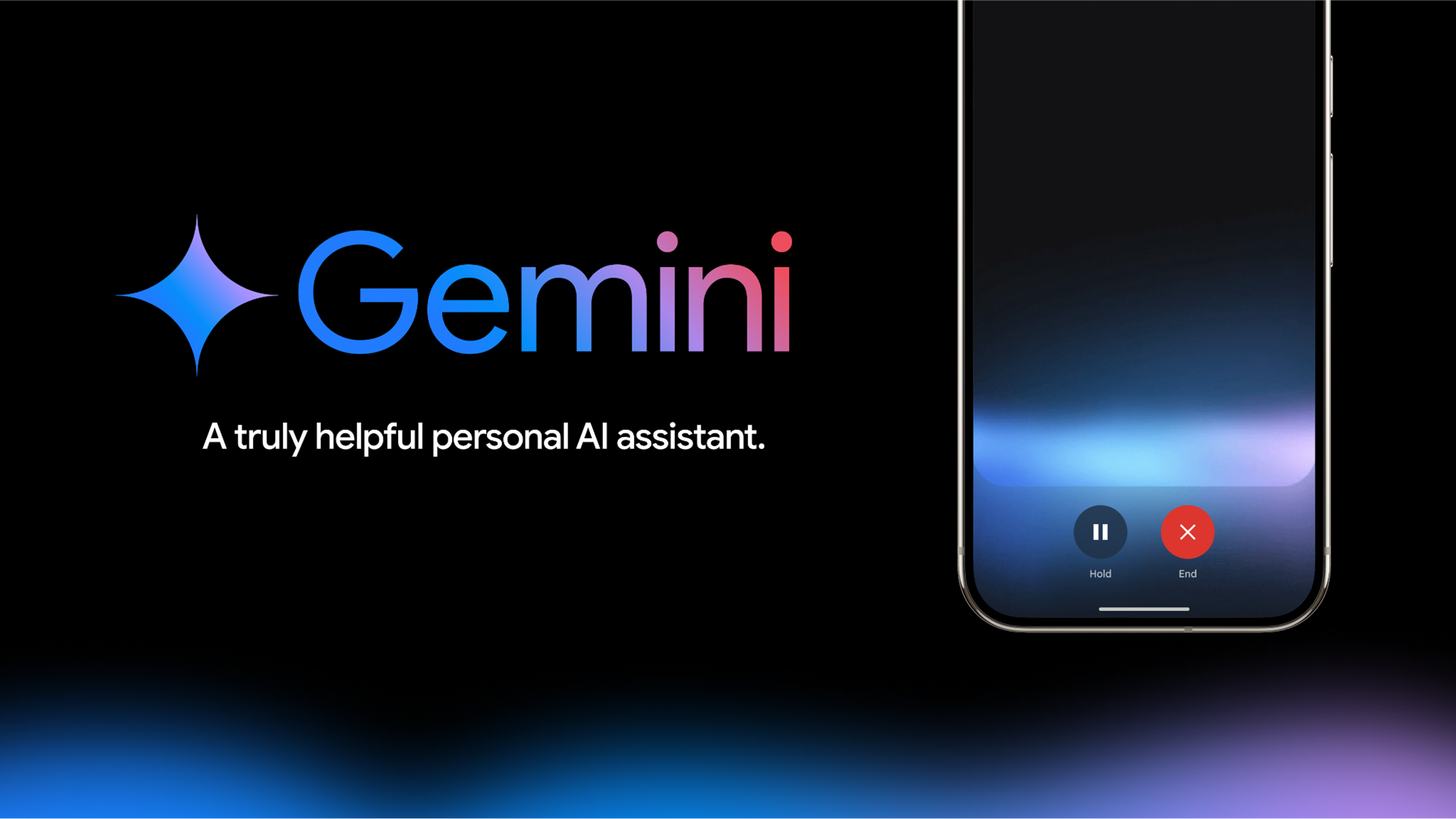
If Google (and perhaps OpenAI) did indeed launch AI model upgrades before the end of the year, it would be further evidence of the time and resources that companies are investing in artificial intelligence in order to stay ahead.
In recent weeks we’ve seen new video tools, improved image generation, and bespoke search features launched by AI companies. When next week rolls around, meanwhile, millions of iPhone owners will be able to try out Apple Intelligence for the first time..
That said, we’re still waiting for Google to launch the next-gen Project Astra AI assistant we saw demoed at Google I/O 2024 back in May. Project Astra combines multiple inputs and outputs in a more advanced and natural way than ever.
While we have previously spent some hands-on time with Project Astra, it doesn’t seem as though it’s directly connected to Gemini 2.0 – though it may be powered by it. Of course as soon as anything is made official, we’ll bring you the news here.
You might also like
Technology
Sunita Williams and Butch Wilmore’s unforeseen extended stay in space- The Week
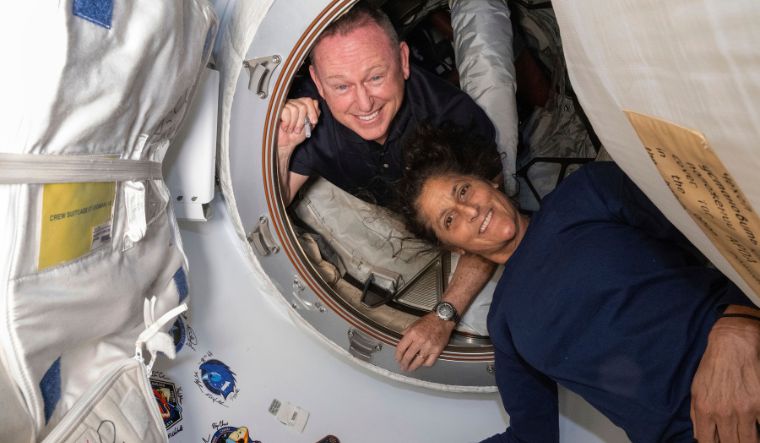
Off late there have been talks about Sunita Williams and Butch Wilmore, two accomplished NASA astronauts, who are currently aboard the International Space Station (ISS) and awaiting their return to earth. Originally scheduled to depart on June 13, their mission has been indefinitely postponed due to technical issues with the Boeing Starliner spacecraft that transported them to the ISS.
The delay is attributed to a series of helium leaks and thruster problems detected on the Starliner. NASA and Boeing engineers are diligently working to resolve these challenges and ensure the safe return of the astronauts. While the mission has faced setbacks, NASA has emphasised that Williams and Wilmore are not ‘stranded’ and can undock from the ISS and return to Earth whenever necessary.
But only time will tell as to when and how both the astronauts return to Earth. NASA is taking a cautious approach, allowing mission teams ample time to thoroughly review the spacecraft’s propulsion system data before authorising the return. This decision reflects the agency’s commitment to prioritising the safety and well-being of the astronauts.
“The challenges faced by the Starliner are not unprecedented in the history of space exploration. Previous missions, such as the Apollo 13 incident in 1970, have also encountered unexpected obstacles, requiring astronauts and ground crews to demonstrate resilience and ingenuity. The Indian Space Research Organisation’s (ISRO) Gaganyaan mission has also faced delays due to the Covid-19 pandemic. Despite the current setbacks, NASA and Boeing remain dedicated to the successful completion of the Starliner’s inaugural crewed mission. This mission is a crucial step in the agency’s Commercial Crew Program, which aims to establish reliable and cost-effective access to the ISS for American astronauts,” remarked Srimathy Kesan, founder and CEO of Space Kidz India, which is into design, fabrication and launch of small satellites, spacecraft and ground systems.
However, there is no denying the fact that Boeing’s first manned flight of its Starliner spacecraft did not go as planned. Despite claiming they were prepared after years of testing, the spacecraft encountered problems and had to remain docked to the International Space Station (ISS). The issues include helium leaks and malfunctioning thrusters in the propulsion system. Consequently, the spacecraft’s return to Earth has been postponed indefinitely while the team works on fixing the glitches.
“Ensuring the safe return of NASA astronauts Sunita Williams and Barry ‘Butch’ Wilmore is NASA’s main priority. However, the recent technical delays faced by Boeing’s Starliner spacecraft raise concerns about the future of the programme and the company’s involvement in space missions. Boeing’s prime concern is to prove it can safely transport mission crew and overcome the technical snags afflicting both the spacecraft and the company’s commercial aviation division,” pointed out space expert Girish Linganna.
After the mission is over, NASA and Boeing will need to go through a thorough certification process in order to use the Starliner spacecraft for regular crew rotation missions. This will involve flying a full crew of four astronauts for extended stays on the ISS. Once certified, the Starliner will join SpaceX’s Dragon spacecraft as a transportation system for NASA.
“NASA is keen on having two reliable systems for transporting astronauts to the space station, as it provides a backup in case one system encounters any issues. This is all part of a $4.2-billion contract that NASA awarded to Boeing 10 years ago and they are eager to see the Starliner fulfil its role in space exploration. Boeing has faced numerous challenges, including an expensive failed test flight in 2019. Currently, the company is focused on launching the Starliner for regular crewed missions that are vital for Boeing to recover from significant financial losses and begin generating revenue,” added Linganna.
As per media reports, Wayne Hale, a former director of NASA’s space shuttle program, has observed that Boeing was carefully evaluating the situation and would not risk astronaut safety. Securing post-certification missions is critical for both Boeing and SpaceX, as these missions are essential for their financial recovery and profitability. The success of the Starliner programme is crucial for determining Boeing’s financial future.
The Starliner spacecraft has encountered multiple challenges related to small helium leaks, which have caused significant delays in its launch and return. Initially, NASA and Boeing attributed the leaks to a faulty seal. But later, they admitted to being unsure about the exact cause. The teams are also investigating the sudden failure of five of the spacecraft’s thrusters during its approach to the space station on June 6. This unexpected event compelled NASA to request Boeing to manoeuvre the vehicle backward and reactivate the thrusters to bring them back online.
“The situation is more complicated because the helium and thruster issues are in Starliner’s service module. This part of the spacecraft provides most of its engine power. Before the spacecraft returns to the Earth, the service module is detached and burns up in the atmosphere. Engineers want to figure out the problems while they still have access to the hardware,” explained Linganna.
Originally, the Starliner was scheduled to return home on June 18, but NASA moved that date to June 26. However, on June 21, NASA delayed the return once again to some time in July. They have cited the need for more time to address issues with the spacecraft’s propulsion system.
NASA has stated that there is no urgency to bring the astronauts back home and that the helium leaks do not pose a risk to their return. Despite some propulsion system problems, four of the five thrusters are now functioning normally out of the 28 on board, providing enough failover options. The spacecraft has the ability to stay docked in space for up to 45 days, giving the crew enough time to troubleshoot the issues. Both NASA and Boeing have held out the assurance that the Starliner will remain in good condition and can be used in case of an emergency on the space station to safely transport the astronauts back to Earth.
Steve Stich, who manages NASA’s Commercial Crew Program, has told the media that they were proceeding carefully and adhering to their standard procedures and has said the team was prioritising data-driven decisions when addressing the issues with the small helium system leaks and thruster performance observed during the rendezvous and docking process. Resolution of these problems is crucial for ensuring successful certification, according to officials. According to Stich, the whole team is trying to figure out what is going on with this vehicle for the crewed flight test and planning its return. Later on NASA is planning to review all the tasks that lie ahead once this vehicle returns with the crew.
Boeing and NASA are gathering a lot of data on their systems to prepare for their work. They have already tested the thrusters while the spacecraft was attached to the space station. Now, they are using simulators on the ground to explore different scenarios. This helps them find and fix issues to make sure the spacecraft is safe. Safety is the top priority, especially with the memory of the space shuttle Columbia disaster in 2003, where astronaut Kalpana Chawla and her crew lost their lives when the shuttle broke apart during re-entry.
As the space community closely follows this unfolding saga, it serves as a testament to the perseverance and innovation that define the pursuit of human spaceflight. Sunita Williams and Butch Wilmore’s extended stay on the ISS is a testament to their expertise and the resilience of the space program, as they patiently await their safe return to Earth. At the same time it has been reported that Williams and Wilmore are also eager to stay in orbit. Williams last went to space in 2012 and Wilmore in 2015.
Technology
The death of Moore’s Law is finally starting to stink
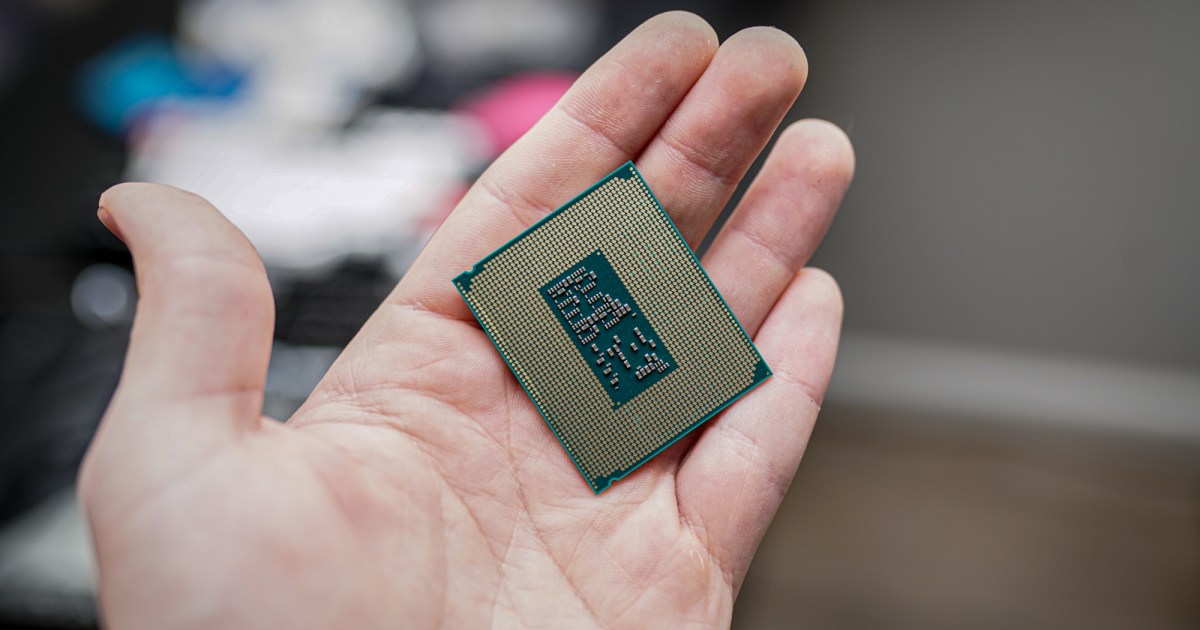
For more than two decades we’ve heard about the death of Moore’s Law. It was a principle of the late Intel co-founder Gordon Moore, positing that the number of transistors in a chip would double about every two years. In 2006, Moore himself said it would end in the 2020s. MIT Professor Charles Leiserson said it was over in 2016. Nvidia’s CEO declared it dead in 2022. Intel’s CEO claimed the opposite a few days later.
There’s no doubt that the concept of Moore’s Law — or rather observation, lest we treat this like some law of physics — has lead to incredible innovation among desktop processors. But the death of Moore’s Law isn’t a moment in time. It’s a slow, ugly process, and we’re finally seeing what that looks like in practice.
Creative solutions

We have two brand new generations from AMD and Intel, neither of which really came out of the gate swinging. As you can read in my Core Ultra 9 285K review, Intel’s latest attempt pulls off a lot of impressive feats with its radically new design, but it still can’t hold up to the competition. And the Ryzen 9 9950X, although a clear upgrade over its Zen 4 counterparts, doesn’t deliver the generational improvements we’ve become accustomed to.
Consider this — looking at Cinebench R23, the multi-core jump from the Ryzen 9 5950X to the Ryzen 9 7950X was 36%. Between the Ryzen 9 7950X and Ryzen 9 9950X? 15%. That’s less than half the improvement within one generation. In Handbrake, the Ryzen 9 7950X sped up transcoding by 34% compared to the Ryzen 9 5950X. With the Ryzen 9 9950X, the improvement shrunk to just 13%.
This isn’t just one odd generation, either. Looking at the single-core performance of the Core i9-101900K and Core i9-12900K, Intel delivered a 54% improvement. Even comparing the Core i9-12900K, which is three generations old at this point, to the latest Core Ultra 9 285K, we see just a 20% improvement. Worse, the new Core Ultra series from Intel shows oddly high results in Cinebench, and if you break out to other applications, you can actually see some regressions compared to a generation or two back.
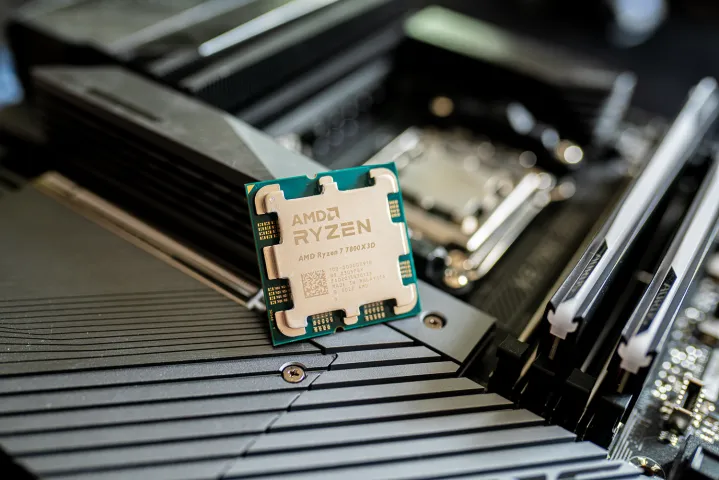
Even within just a few years, the rate of performance improvements has slowed considerably. Moore’s Law doesn’t directly talk about performance improvements — it’s simply concerned with the number of transistors on a chip. But that has clear performance implications. Throwing more transistors at the problem isn’t practical like it once was — read up on the death of Dennard scaling if you want to learn more why that’s the case.
AMD and Intel may not talk about it publicly, but both companies clearly see the writing on the walls. That’s likely why Intel pivoted to a hybrid architecture in the first place, and why it’s introduced a radical redesign with its Arrow Lake CPUs. And for AMD’s part, it’s no secret that 3D V-Cache has become a defining technology for the company’s CPUs, and it’s a clear way to skirt the bottleneck of Moore’s Law. A large chunk of transistors on any CPU die are dedicated to cache — somewhere in the range of 40% to 70% — and AMD is literally stacking more cache on top that it can’t fit onto the die.
A function of space
One important factor to keep in mind when looking at Moore’s Law and Dennard scaling is space. You can build a massive chip with a ton of transistors, sure, but how much power will it draw? Will it be able to stay under a reasonable temperature? Will it even be practical to place in a PC, or in the enterprise, a server? You cannot separate the number of transistors from the size of the die.
I’m reminded of a conversation I had with AMD’s Chris Hall, where we told me: “We were all enjoying Moore’s Law for a long time, but that’s sort of tailed off. And now, every square millimeter of silicon is very expensive, and we can’t afford to keep doubling. We can, we can build those chips, we know how to build them, but they become more expensive.”

I’m not here to defend Nvidia’s insane pricing strategy, but the company has reportedly seen higher pricing from TSMC with its RTX 40-series GPUs than it saw with Samsung with its RTX 30-series GPUs. And, the RTX 4090 does deliver more than twice the transistor count as the RTX 3090 at a very similar die size. If there’s a commitment to Moore’s Law across chips, I’m not sure we as consumers will like the outcome when it comes time to upgrade a PC.
That’s not to mention the other problems a card like the RTX 4090 has faced — high power requirements, an insane cooler size, and a melting power connector. Not all of these problems are a function of doubling the number of transistors, not even close, but it plays a role. Bigger chips for more transistors, more heat, and usually at a higher cost, especially as the cost of silicon continues to increase.
The shortcut
Moore’s Law is dead, PC hardware is getting more expensive, and everything sucks — that’s not how I want to leave this. There will be more ways to deliver performance improvements year over year that doesn’t rely solely on more transistors on a chip at the same size. The way we’re getting there now is just different. I’m talking about AI.
Wait, don’t click off the article. Tech companies are excited about AI because it represents a lot of money — cynical as that perspective is, it’s just the way trillion-dollar corporations like Microsoft and Nvidia work. But AI also represents a way to bring a new form of computing. I’m not talking about a slew of AI assistants and hallucinatory chatbots, but rather applying machine learning to a problem to approximate results that we would previously get with pure silicon innovation.

Look at DLSS. The idea of using upscaling to maintain a certain level of performance is controversial, and it’s a nuanced conversation when it comes to individual games. But DLSS is enabling better performance without a strict hardware improvement. Add on top of that frame generation, which we now see from DLSS, FSR, and third-party tools like Lossless Scaling, and you have a lot of pixels that are never rendered by your graphics card.
A less controversial angle is Nvidia’s Ray Reconstruction. It’s no secret that ray tracing is demanding, and part of getting around that hardware demand is a process of denoising — limiting the number of rays, then cleaning up the resulting image with denoising. Ray Reconstruction delivers a result that would require far more rays and much more powerful hardware, and it does so without limiting performance at all — and once again, through machine learning.
It really doesn’t matter if Moore’s Law is dead or alive and well — if companies like AMD, Intel, and Nvidia want to stay afloat, they’ll continually need to think of solutions to address rising performance demands. Innovation is far from dead in PC hardware, but it might start to look a little different.
-

 Technology1 month ago
Technology1 month agoIs sharing your smartphone PIN part of a healthy relationship?
-

 Science & Environment1 month ago
Science & Environment1 month agoHow to unsnarl a tangle of threads, according to physics
-

 Science & Environment1 month ago
Science & Environment1 month agoHyperelastic gel is one of the stretchiest materials known to science
-

 Science & Environment1 month ago
Science & Environment1 month ago‘Running of the bulls’ festival crowds move like charged particles
-

 Science & Environment1 month ago
Science & Environment1 month agoMaxwell’s demon charges quantum batteries inside of a quantum computer
-

 Technology1 month ago
Technology1 month agoWould-be reality TV contestants ‘not looking real’
-

 Science & Environment1 month ago
Science & Environment1 month agoX-rays reveal half-billion-year-old insect ancestor
-

 Science & Environment1 month ago
Science & Environment1 month agoSunlight-trapping device can generate temperatures over 1000°C
-

 Technology4 weeks ago
Technology4 weeks agoUkraine is using AI to manage the removal of Russian landmines
-

 Science & Environment1 month ago
Science & Environment1 month agoLiquid crystals could improve quantum communication devices
-

 Science & Environment1 month ago
Science & Environment1 month agoQuantum ‘supersolid’ matter stirred using magnets
-

 Science & Environment1 month ago
Science & Environment1 month agoLaser helps turn an electron into a coil of mass and charge
-

 TV3 weeks ago
TV3 weeks agoসারাদেশে দিনব্যাপী বৃষ্টির পূর্বাভাস; সমুদ্রবন্দরে ৩ নম্বর সংকেত | Weather Today | Jamuna TV
-

 Technology3 weeks ago
Technology3 weeks agoSamsung Passkeys will work with Samsung’s smart home devices
-

 News3 weeks ago
News3 weeks agoMassive blasts in Beirut after renewed Israeli air strikes
-

 Sport3 weeks ago
Sport3 weeks agoBoxing: World champion Nick Ball set for Liverpool homecoming against Ronny Rios
-

 Science & Environment1 month ago
Science & Environment1 month agoPhysicists have worked out how to melt any material
-

 Science & Environment1 month ago
Science & Environment1 month agoA new kind of experiment at the Large Hadron Collider could unravel quantum reality
-

 Football4 weeks ago
Football4 weeks agoRangers & Celtic ready for first SWPL derby showdown
-

 News3 weeks ago
News3 weeks agoNavigating the News Void: Opportunities for Revitalization
-

 News3 weeks ago
News3 weeks ago▶ Hamas Spent $1B on Tunnels Instead of Investing in a Future for Gaza’s People
-

 News3 weeks ago
News3 weeks ago‘Blacks for Trump’ and Pennsylvania progressives play for undecided voters
-

 MMA3 weeks ago
MMA3 weeks ago‘Uncrowned queen’ Kayla Harrison tastes blood, wants UFC title run
-

 Womens Workouts1 month ago
Womens Workouts1 month ago3 Day Full Body Women’s Dumbbell Only Workout
-

 Football3 weeks ago
Football3 weeks agoWhy does Prince William support Aston Villa?
-

 Business3 weeks ago
Business3 weeks agoWhen to tip and when not to tip
-

 Sport3 weeks ago
Sport3 weeks agoAaron Ramsdale: Southampton goalkeeper left Arsenal for more game time
-

 MMA4 weeks ago
MMA4 weeks agoDana White’s Contender Series 74 recap, analysis, winner grades
-

 Technology3 weeks ago
Technology3 weeks agoGmail gets redesigned summary cards with more data & features
-

 MMA3 weeks ago
MMA3 weeks agoPereira vs. Rountree prediction: Champ chases legend status
-

 Sport3 weeks ago
Sport3 weeks agoWales fall to second loss of WXV against Italy
-

 Science & Environment1 month ago
Science & Environment1 month agoWhy this is a golden age for life to thrive across the universe
-

 Technology4 weeks ago
Technology4 weeks agoRussia is building ground-based kamikaze robots out of old hoverboards
-

 Technology4 weeks ago
Technology4 weeks agoMicrophone made of atom-thick graphene could be used in smartphones
-
Business4 weeks ago
DoJ accuses Donald Trump of ‘private criminal effort’ to overturn 2020 election
-

 Technology3 weeks ago
Technology3 weeks agoMusk faces SEC questions over X takeover
-

 Sport3 weeks ago
Sport3 weeks agoMan City ask for Premier League season to be DELAYED as Pep Guardiola escalates fixture pile-up row
-

 News3 weeks ago
News3 weeks agoWoman who died of cancer ‘was misdiagnosed on phone call with GP’
-

 MMA3 weeks ago
MMA3 weeks agoKetlen Vieira vs. Kayla Harrison pick, start time, odds: UFC 307
-

 Science & Environment1 month ago
Science & Environment1 month agoQuantum forces used to automatically assemble tiny device
-

 Science & Environment1 month ago
Science & Environment1 month agoITER: Is the world’s biggest fusion experiment dead after new delay to 2035?
-

 Science & Environment1 month ago
Science & Environment1 month agoA slight curve helps rocks make the biggest splash
-

 News1 month ago
News1 month ago▶️ Hamas in the West Bank: Rising Support and Deadly Attacks You Might Not Know About
-

 Technology1 month ago
Technology1 month agoMeta has a major opportunity to win the AI hardware race
-

 Technology1 month ago
Technology1 month agoWhy Machines Learn: A clever primer makes sense of what makes AI possible
-

 Science & Environment1 month ago
Science & Environment1 month agoNerve fibres in the brain could generate quantum entanglement
-

 Science & Environment1 month ago
Science & Environment1 month agoNuclear fusion experiment overcomes two key operating hurdles
-

 Technology4 weeks ago
Technology4 weeks agoEpic Games CEO Tim Sweeney renews blast at ‘gatekeeper’ platform owners
-

 Technology4 weeks ago
Technology4 weeks agoThis AI video generator can melt, crush, blow up, or turn anything into cake
-

 Technology3 weeks ago
Technology3 weeks agoMicrosoft just dropped Drasi, and it could change how we handle big data
-

 Sport4 weeks ago
Sport4 weeks agoSturm Graz: How Austrians ended Red Bull’s title dominance
-

 News3 weeks ago
News3 weeks agoFamily plans to honor hurricane victim using logs from fallen tree that killed him
-

 Sport3 weeks ago
Sport3 weeks ago2024 ICC Women’s T20 World Cup: Pakistan beat Sri Lanka
-

 Entertainment3 weeks ago
Entertainment3 weeks agoNew documentary explores actor Christopher Reeve’s life and legacy
-

 MMA4 weeks ago
MMA4 weeks agoJulianna Peña trashes Raquel Pennington’s behavior as champ
-

 Money3 weeks ago
Money3 weeks agoWetherspoons issues update on closures – see the full list of five still at risk and 26 gone for good
-
Business3 weeks ago
Sterling slides after Bailey says BoE could be ‘a bit more aggressive’ on rates
-

 Sport4 weeks ago
Sport4 weeks agoChina Open: Carlos Alcaraz recovers to beat Jannik Sinner in dramatic final
-

 Technology3 weeks ago
Technology3 weeks agoThe best budget robot vacuums for 2024
-

 MMA3 weeks ago
MMA3 weeks ago‘I was fighting on automatic pilot’ at UFC 306
-

 Sport3 weeks ago
Sport3 weeks agoCoco Gauff stages superb comeback to reach China Open final
-

 Science & Environment1 month ago
Science & Environment1 month agoTime travel sci-fi novel is a rip-roaringly good thought experiment
-

 Science & Environment1 month ago
Science & Environment1 month agoHow to wrap your mind around the real multiverse
-

 News1 month ago
News1 month ago▶️ Media Bias: How They Spin Attack on Hezbollah and Ignore the Reality
-

 Business4 weeks ago
Business4 weeks agoChancellor Rachel Reeves says she needs to raise £20bn. How might she do it?
-

 Technology3 weeks ago
Technology3 weeks agoTexas is suing TikTok for allegedly violating its new child privacy law
-
Business3 weeks ago
The search for Japan’s ‘lost’ art
-
Business4 weeks ago
Bank of England warns of ‘future stress’ from hedge fund bets against US Treasuries
-

 News3 weeks ago
News3 weeks agoGerman Car Company Declares Bankruptcy – 200 Employees Lose Their Jobs
-

 MMA3 weeks ago
MMA3 weeks agoKayla Harrison gets involved in nasty war of words with Julianna Pena and Ketlen Vieira
-

 MMA3 weeks ago
MMA3 weeks agoUFC 307 preview show: Will Alex Pereira’s wild ride continue, or does Khalil Rountree shock the world?
-
Business3 weeks ago
Head of UK Competition Appeal Tribunal to step down after rebuke for serious misconduct
-

 MMA3 weeks ago
MMA3 weeks agoPereira vs. Rountree preview show live stream
-

 Technology3 weeks ago
Technology3 weeks agoThe best shows on Max (formerly HBO Max) right now
-

 Technology3 weeks ago
Technology3 weeks agoIf you’ve ever considered smart glasses, this Amazon deal is for you
-

 Business4 weeks ago
Business4 weeks agoStocks Tumble in Japan After Party’s Election of New Prime Minister
-

 Sport4 weeks ago
Sport4 weeks agoWorld’s sexiest referee Claudia Romani shows off incredible figure in animal print bikini on South Beach
-

 Science & Environment4 weeks ago
Science & Environment4 weeks agoMarkets watch for dangers of further escalation
-

 Technology3 weeks ago
Technology3 weeks agoJ.B. Hunt and UP.Labs launch venture lab to build logistics startups
-

 News3 weeks ago
News3 weeks agoCornell is about to deport a student over Palestine activism
-

 News3 weeks ago
News3 weeks agoHull KR 10-8 Warrington Wolves – Robins reach first Super League Grand Final
-

 Technology3 weeks ago
Technology3 weeks agoOpenAI secured more billions, but there’s still capital left for other startups
-

 Health & fitness3 weeks ago
Health & fitness3 weeks agoNHS surgeon who couldn’t find his scalpel cut patient’s chest open with the penknife he used to slice up his lunch
-

 Business3 weeks ago
Business3 weeks agoStark difference in UK and Ireland’s budgets
-

 MMA4 weeks ago
MMA4 weeks agoAlex Pereira faces ‘trap game’ vs. Khalil Rountree
-

 Technology3 weeks ago
Technology3 weeks agoCheck, Remote, and Gusto discuss the future of work at Disrupt 2024
-
Politics3 weeks ago
Rosie Duffield’s savage departure raises difficult questions for Keir Starmer. He’d be foolish to ignore them | Gaby Hinsliff
-

 Money3 weeks ago
Money3 weeks agoPub selling Britain’s ‘CHEAPEST’ pints for just £2.60 – but you’ll have to follow super-strict rules to get in
-

 TV3 weeks ago
TV3 weeks agoLove Island star sparks feud rumours as one Islander is missing from glam girls’ night
-

 News1 month ago
News1 month agoOur millionaire neighbour blocks us from using public footpath & screams at us in street.. it’s like living in a WARZONE – WordupNews
-
News1 month ago
the pick of new debut fiction
-

 News4 weeks ago
News4 weeks agoRwanda restricts funeral sizes following outbreak
-

 Football4 weeks ago
Football4 weeks agoSimo Valakari: New St Johnstone boss says Scotland special in his heart
-

 Technology3 weeks ago
Technology3 weeks agoApple iPhone 16 Plus vs Samsung Galaxy S24+
-

 News3 weeks ago
News3 weeks agoBalancing India and China Is the Challenge for Sri Lanka’s Dissanayake
-

 MMA4 weeks ago
MMA4 weeks agoHow to watch Salt Lake City title fights, lineup, odds, more
-
Business4 weeks ago
how UniCredit built its Commerzbank stake
-

 News4 weeks ago
News4 weeks agoLiverpool secure win over Bologna on a night that shows this format might work
-

 TV3 weeks ago
TV3 weeks agoPhillip Schofield accidentally sets his camp on FIRE after using emergency radio to Channel 5 crew
-

 Business3 weeks ago
Business3 weeks agoWater companies ‘failing to address customers’ concerns’


You must be logged in to post a comment Login